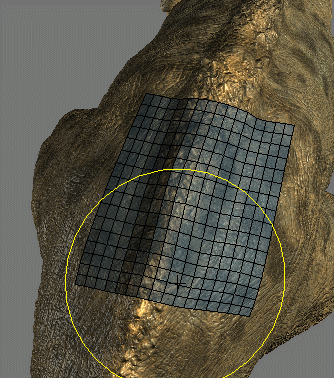
XSI is very friendly to high density meshes, but other apps will absolutely choke if you try to import a couple of high res models. If you plan on exporting your model into any animation application - even if you just want to pose it and render it there - the polygon count becomes an issue. Lower the density of your mesh so you can animate it. Again, this does NOT apply to voxel sculpting which has a different underlying structure for the sculpt.ģ. A better approach would be to retopolize your mesh before scultping so the edge flow of your polygons worked with you instead of against you. So this approach creates VERY dense meshes. Trouble is that subdividing a mesh increses the polygon count exponentially (by a factor of four, in fact). The casual zBrush user has never taken the time to learn polygon flow, so their solution is to crank up the sub-divisions until the polygons are small enough that it is possible to get the edge they want. This is, honestly, why so many zBrush models have a gajillion ploygons.

And then the line of the lips goes counter to the edge of the polygons in the sphere - even when you subdivide many, many times.

(zBrush has a ton of these on their site.) It works OK, until you get to the moth. The classic case of this is if you have ever watched a head sculpting tutorial that starts with a sphere. Create a better arranged mesh to sculpt on ("normal" sculpting, not voxel sculpting) One of the real probelms with sculpting on polygons is if they do not flow the right way, you have to add a lot of them to get the edge you want. You can lay a mesh out on your model, and have it "cling" to the form, and use this as a starting point for shirts, coats, and what have youĢ. To answer your question though, there are three times I can see using retopology, even for a casual artist:ġ. They could model in a more natural and organic way, and then lay a mesh over top of it that had a MUCH lower polygon count. By laying down a low-polygon mesh over top of the high density model, artists now had the best of both worlds. Applications such as zBrush and Mudbox allowed artists to get involved in the creation process, because it was more like working with clay and traditional artist mediums, but the problem was the result was millions of polygons that would choke any animation program. The problem was that to be a good polygon artist, you need to be part scientist - which ran counter to the way a lot of artists think.

Then you would paint it, so it looked "real" and render it in an animation app. It used to be that if you wanted to create a model, you would have to start in something like Maya, LightWave, etc, and build everything up polygon by polygon, until you had a workable mesh.
3d coat retopology free#
There are lots of ways you might use the retopolgy tools, but the main way they are used today is to free you from thinking about polygons until you have to. Hey all, i hate to ask what maybe a really dumb question, but i'm new to sculpting in 3D and i'm wondering why i would use Retopology, what purpose does it have? is it so i can texture my models, are they not texturable without Retopology, or does it have more to do with Import and Export, anyhow, i am somewhat lost on the matter and would really appreciate an explanation on it's purpose and uses.


 0 kommentar(er)
0 kommentar(er)
